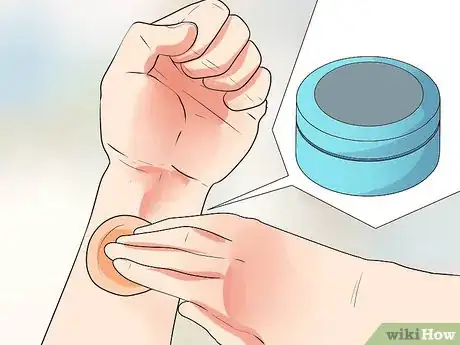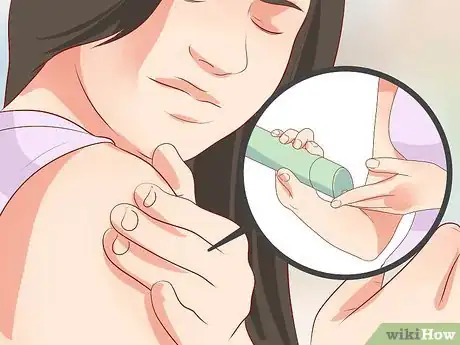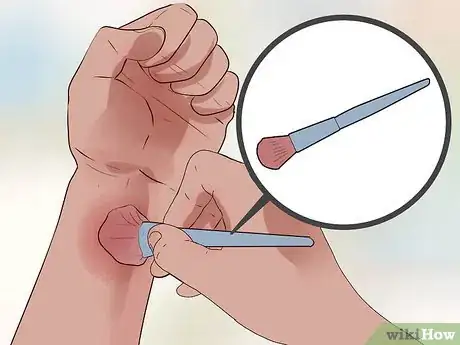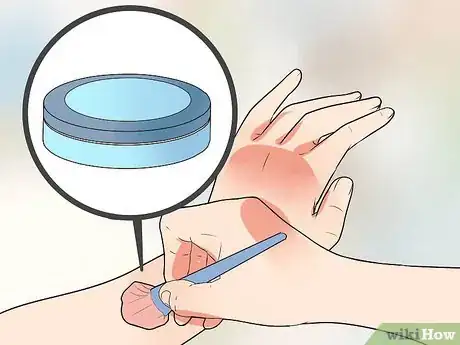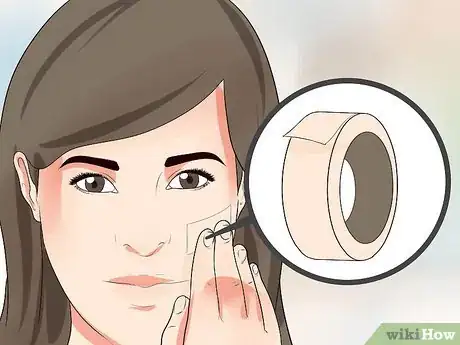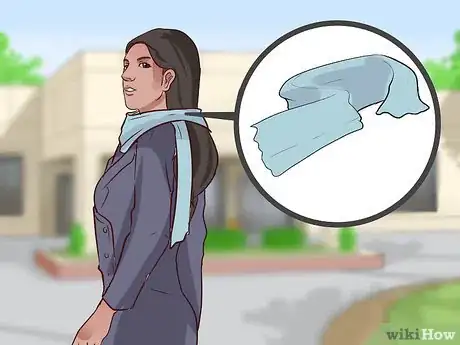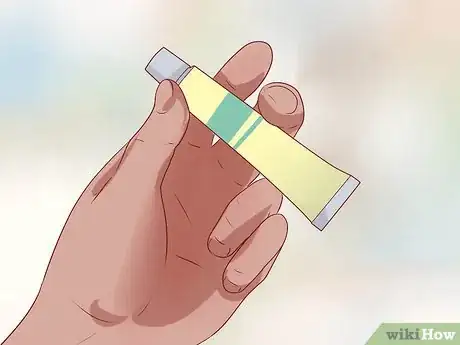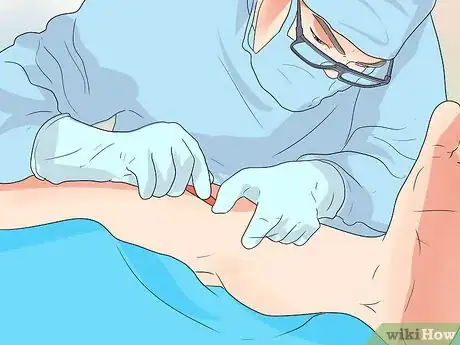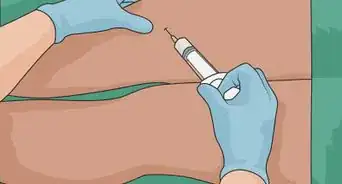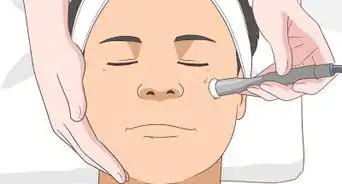This article was co-authored by Erica Coates. Erica Coates is a Professional Makeup Artist and the Owner of Erica Nicole Beauty based in the Washington D.C. metro area. With more than 14 years of experience, she specializes in creating and personalizing makeup looks and skin prep for makeup. Erica received her cosmetology training from the Bennett Career Institute.
This article has been viewed 33,195 times.
Having visible scars on your body can be uncomfortable in any social situation. Scars can affect self-esteem, so some people prefer to cover facial or body scars daily. Others may want to save the work of hiding imperfections for a photoshoot or special event. No matter the reason, it is possible to successfully camouflage scars on the body.
Steps
Camouflaging a Scar with Makeup
-
1Evaluate the scar. Scars vary in size and severity depending on the original cause. Determining the quality of the scar can help camouflage it.[1]
- Keloid scars are scars that raise above the skin and do not go away over time. They often occur after surgeries, but acne and minor irritations can also cause keloid scars.[2]
- Flat scars and hyperpigmentation commonly form after skin irritation including pimples, cuts, or burns. Note that scars vary in color depending on your skin. Some are pink or reddish while others are a bit darker than your natural skin tone.
-
2Choose a cover-up. Most scars can be covered with a concealer. Your cover up should generally match the color of your skin. The type of scar, however, can determine the hue or quality of makeup you choose.[3]
- For flat scars, choose a color that neutralizes the scar. This means you’ll choose a color with a hue that reflects the opposite color of the scar. For example, if the scar is red, choose a concealer with green undertones to cancel out the redness.
- Keloid scars can be covered with a concealer that matches the skin around it. Lighter or darker concealers will only draw attention to the scar.
- A cream foundation can also work to create volume and blend with the rest of the skin.[4]
Advertisement -
3Test your concealer before purchasing it. Not all drug stores or makeup stores will allow you to test a product, but it is best to do so. It can be difficult to tell if a color is right for you unless it goes on the skin. Remember to test the color on the area that you will use it. Skin tone may vary around different parts of the body.
-
4Clean the affected area. Your face or body should be completely clean before applying any type of makeup or concealer.[5]
-
5Apply a moisturizer and/or sunscreen. Using an SPF of 30 or higher is key, as it will prevent the scar from worsening. A moisturizer provides a soft base for concealer application.[6]
-
6Use a sponge, concealer brush, or your fingers to apply the concealer. Put a small amount of concealer on your finger (or tool of your choice) and dab it on and around the scar. Continue dabbing until it blends in.[7]
- If you are concealing a scar that is not on your face, put your clothes on before you apply concealer. Protect your clothes with napkins or paper towels if necessary.
-
7Apply a powder to set the concealer. Use a translucent powder or one that matches your skin tone. Apply the powder with a large brush or buff. The powder will seal in the concealer and prevent it from running or rubbing off.[8]
Covering the Scar
-
1Use concealing tape to effectively camouflage a scar. Although concealing tapes are often used to hide tattoos, they can work for scars as well. Surgical tapes of your skin-tone can also quickly cover a scar. Remember to search for a tape that best matches the color of your skin.
- Cut the adhesive to match the general shape of your scar so that it blends in with the rest of your skin.
-
2Cover it with your clothes. Clothing and accessories can cover a scar depending on its size and location. This may be the quickest and easiest way to camouflage a scar.
- Wear a hat or scarf to cover scars on the head and neck.
- Scars on your arms and legs can be covered by long sleeves, long pants, or long skirts.
- Accessorize with necklaces or bracelets to cover scars on the wrists and chest.
-
3Change your hairstyle. If your hair is long, try wearing it down to cover scars on the side of your face. Ask your stylist to cut a long bang to cover scars on the forehead.
-
4Get a tattoo. In addition to medical corrective tattooing, consider getting a creative tattoo to cover the scar.
- Keloid scars, red scars, infected scars, or scars that have not healed should not be tattooed.
- Consult with a tattoo artist who has covered scars in the past. In some cases, the ink does not appear as desired over a scar.
Reducing the Appearance of the Scar
-
1Purchase a treatment ointment. The faster your scar fades, the less time you will need to spend concealing it. Vaseline or gels containing silicone and antioxidants are often best to heal scars. [9]
-
2Apply SPF daily. Use a broad spectrum sunscreen with an SPF of 30 or greater every day without fail. Sunscreen will prevent further damage to the skin.
-
3Consider medical procedures for severe scars. If the scar is aesthetically unbearable or becomes infected, medical procedures may be a good an option. Results vary, so make sure to schedule a thorough consultation with a dermatologist.
- Deep indented scars can be treated with laser treatments or surgeries.
- Keloid scars can be surgically removed if silicone treatment shows no results.
- Flat scars with little discoloration can be treated with medical corrective tattooing.
Warnings
- Do not allow any hair or clothes to rub against the cream or makeup, or it may smudge and ruin the effect.⧼thumbs_response⧽
- Do not apply any cosmetics without testing them first for allergic reactions.⧼thumbs_response⧽
References
- ↑ http://stylecaster.com/beauty/how-to-cover-scars/
- ↑ http://www.medicinenet.com/keloid/article.htm
- ↑ http://stylecaster.com/beauty/how-to-cover-scars/
- ↑ Erica Coates. Professional Makeup Artist. Expert Interview. 25 February 2022.
- ↑ http://www.teenvogue.com/story/how-to-cover-up-body-acne
- ↑ http://www.teenvogue.com/story/how-to-cover-up-body-acne
- ↑ http://www.teenvogue.com/story/how-to-cover-up-body-acne
- ↑ http://www.teenvogue.com/story/how-to-cover-up-body-acne
- ↑ http://www.wsj.com/articles/SB10001424127887323648304578495000021272828
- ↑ Erica Coates. Professional Makeup Artist. Expert Interview. 25 February 2022.



